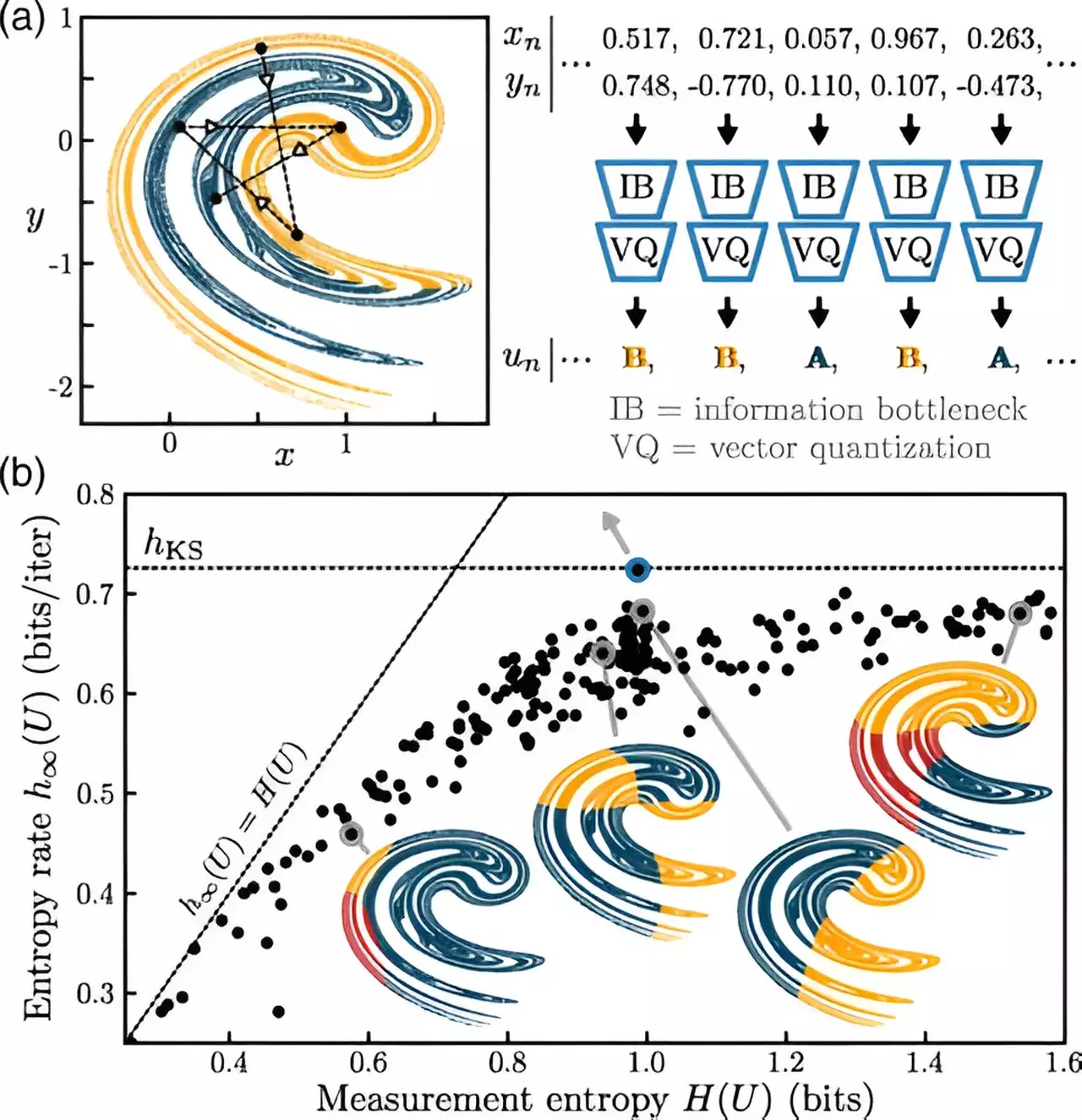Chaos embodies a paradox that both fascinates and frustrates humanity: the drive to predict the unpredictable. Whether illustrating the complexities of weather patterns or the tumultuous behaviors of socio-economic systems, chaotic phenomena have captivated thinkers for centuries. The research led by engineers Dani S. Bassett and Kieran Murphy at the University of Pennsylvania dives deep into these chaotic waters, employing machine learning not merely as a tool for prediction, but as a transformative lens that helps us understand the core characteristics of chaotic systems. As Murphy articulates, the heart of chaotic behavior lies in its nonlinearity—an elusive quality that creates challenges in prediction.
Unlike linear systems, where outcomes can be anticipated by understanding initial conditions, chaotic systems are fraught with uncertainty. In essence, these systems can seem to leap from blue skies to storms in an instant, reflecting a sensitivity to initial conditions that renders precise forecasting nearly impossible over time. This becomes increasingly problematic the further one looks into the future—a lesson painfully evident in meteorology. The challenge lies in the fact that, although abundant data can be gathered, the inherent unpredictability of chaotic systems means that uncertainty grows exponentially, complicating efforts to achieve reliable forecasts.
Combining Classical Models with Machine Learning
In their groundbreaking study published in *Physical Review Letters*, Bassett and Murphy turn to classical chaos models—essentially ‘clean’ representations of chaotic behavior devoid of external noise—to establish a benchmark for measurement within these chaotic environments. Their innovative integration of machine learning techniques promises, not just to enhance our understanding of chaos, but to redefine how we measure it. This is achieved by creating “information maps” of complex dynamic systems, which can independently determine important data amidst a tangled mass of seemingly erratic patterns.
Prior methods for characterizing chaotic systems often relied on Lyapunov exponents—mathematical constructs that entailed either extensive data or deep knowledge of the underlying governing equations. By leveraging machine learning, Murphy’s approach circumvents these limitations, allowing researchers to glean insights from chaotic data with far less dependence on massive datasets. Their method distills intricate information into a single metric, effectively capturing the essence of chaotic dynamics that our intuition struggles to decipher.
Deep Learning: A Game-Changer for Dynamic Systems
What propels Murphy’s research is his utilization of deep learning: sophisticated algorithms that tease apart fine-grained details from complex systems across time. Instead of merely predicting behaviors, this methodology focuses on encapsulating the intricate dynamics that define chaotic systems. The machine learning model extracts significant information across various states of the system at any given moment, thereby providing a more rounded perspective of the chaotic behavior that has historically defied comprehension.
This shift is particularly revolutionary. By filtering out less relevant data while retaining critical indicators, researchers can push the boundaries of our understanding, inching closer to ideal measurements that could eventually inform more sophisticated weather forecasts or even healthcare diagnostics. By essentially mapping out how information is created within chaotic systems, Murphy’s work begins to illuminate boundaries and barriers in predictions that have perplexed scientists for eras.
Dynamic Interconnections: From Weather to the Human Mind
The ramifications of this research extend beyond meteorological phenomena and synthetic models; they echo in the very fabric of human dynamics. Mahasweta Narayanan, a researcher in this interdisciplinary field, posits that insights gleaned from chaotic systems can illuminate how the brain generates thoughts and emotions. Bassett highlights the correlation between understanding chaos in dynamic systems and its potential impact on mental health and cognitive science: “Deciphering the information creation in the human brain holds notable promise,” she states, underscoring the interplay between chaos theory and mental well-being.
As machine learning unveils deeper layers of complexity in these dynamic systems—including but not limited to weather patterns and brain functions—it challenges us to reimagine the boundaries of knowledge. The quest for understanding chaotic systems aligns with a broader human inclination toward seeking certainty and clarity in an unpredictable world.
Innovating Solutions through Chaos
One cannot overlook the irony that in studying chaos—where predictability slips through our fingers—we may, paradoxically, begin to uncover pathways toward innovative solutions in various sectors. By improving our comprehension of chaotic phenomena, we could enhance real-world applications ranging from climate forecasting to medical triage, impacting our quality of life in meaningful ways. Indeed, as we continue to harness machine learning’s innate capabilities, we could find ourselves on the cusp of significant advancements that were once merely theoretical in nature.
Such innovative strides suggest a future filled with promise, as we gain not only the tools to analyze data but also to redefine the very frameworks that govern chaotic systems. In doing so, we foster a deeper understanding of our world—a tapestry woven with unpredictability.


Leave a Reply